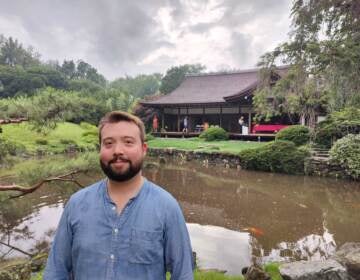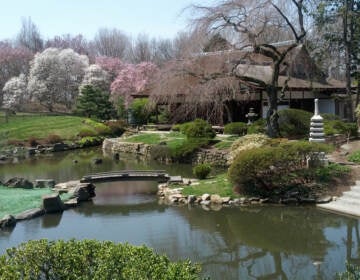Cherry blossoms are blooming in Philly at the Shofuso Japanese Cultural Center
Head gardener Sandi Polyakov says the cherry blossoms evoke a poetic moment of ephemerality.
Listen 4:53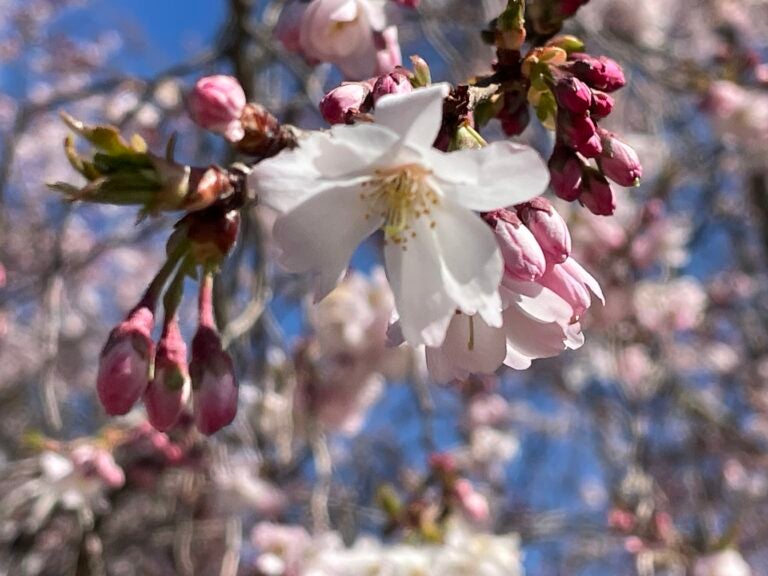
'Close up' blossoms from Yoshino cherry trees in West Fairmount Park. (Jennifer Lynn/WHYY)
From Philly and the Pa. suburbs to South Jersey and Delaware, what would you like WHYY News to cover? Let us know!
In Philadelphia’s West Fairmount Park, next to the Horticultural Center, on the land surrounding the traditional-style Shofuso Japanese House and Garden, there are a hundred or so ornamental cherry trees.
Some are in full bloom right now. Others, like the stately Yoshino, are on the cusp of showing off their white blossoms that shift to a lovely shade of pink as they mature.
Shofuso head gardener Sandi Polyakov met with WHYY “Morning Edition” host Jennifer Lynn to tour the grounds this week.
___
Jennifer Lynn: Now I heard there is a word in Japanese that means cherry blossom viewing and I’m going to try it now. Hanami?
Sandi Polyakov: Yeah hanami or ohanami. It’s really based around this idea of appreciating the turning the page onto spring and the ephemerality of the moment. Cherry blossoms typically only last about one week, maybe two in like absolutely perfect, lucky weather. So it’s this idea that the trees are sleeping when all of a sudden they kind of just explode into this celebration of color, and then a couple weeks go by and the wind blows and all the pedals start falling and then it’s just over. It’s kind of like a poetic moment of ephemerality that in Japanese culture is sort of seen as similar to life, you know the life of a person. It’s just this reminder that we’re only here for a very short period of time.
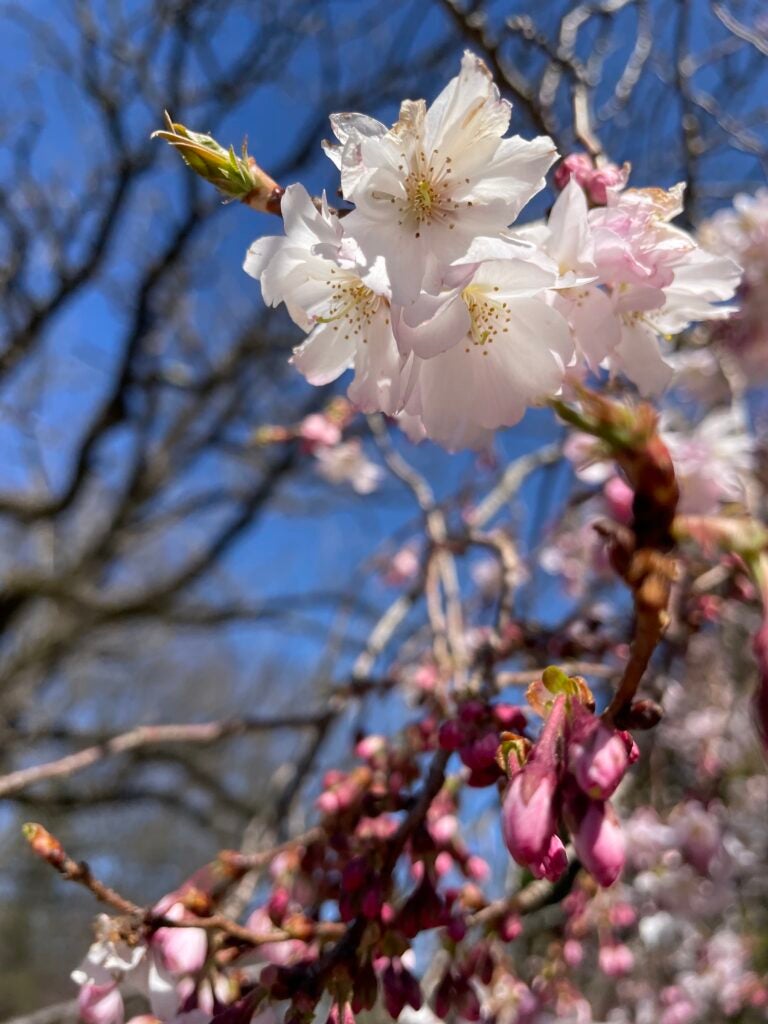
JL: A peak bloom date of these cherry trees is difficult to pinpoint because Philly has microclimates.
SP: Yes, microclimates in the city, and I’m talking about dense buildings that capture sunlight and don’t let the heat out, perhaps even trap humidity. They are areas where the weather is a little bit different in that small area than it might be a mile down the road somewhere that’s a little bit more open. So that can cause trees to bloom much sooner in the city downtown than they are out here in the park. So when people look at the peak bloom prediction and they’re looking out their window, they’re like, “Oh that guy from the Japanese house is crazy. Like these trees are totally blooming now.” But that bloom prediction is really only for the trees out in the park here that we’re closest to where the Cherry Blossom Festival happens. Just keep your eyes peeled for flowers and have a good time.
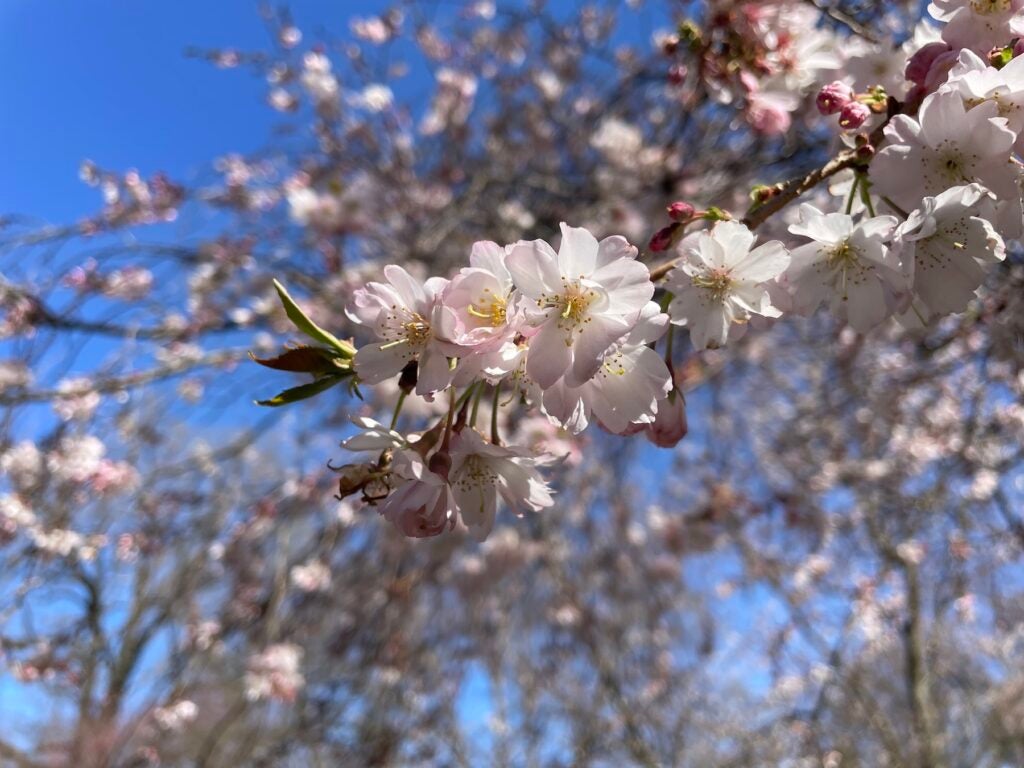
JL: You are the Japanese gardener on staff here. How do Japanese cherry trees fit into the narrative of a Japanese garden?
SP: This may surprise people to hear, but in Japanese gardening traditionally, flowers are used with a lot of restraint, if you will. I think in the west the idea is that you have as many flowers as possible for as much of the year as you can and that’s a totally legitimate way of thinking about flowers. I think flowers are great. In the strict kind of classical Japanese gardening aesthetics, there are very few flowers, and if they are there they’re used as a here-and-there sort of thing, almost like these small subtle seasonal markers, but it’s definitely not supposed to be this very large explosive show. So people associate Japanese cherry trees with Japanese gardening, but Japanese cherry trees are actually more of like a park and public space element that’s used and they will appear in Japanese Gardens, but it’s usually one or two at a time just as this kind of small singular symbol.
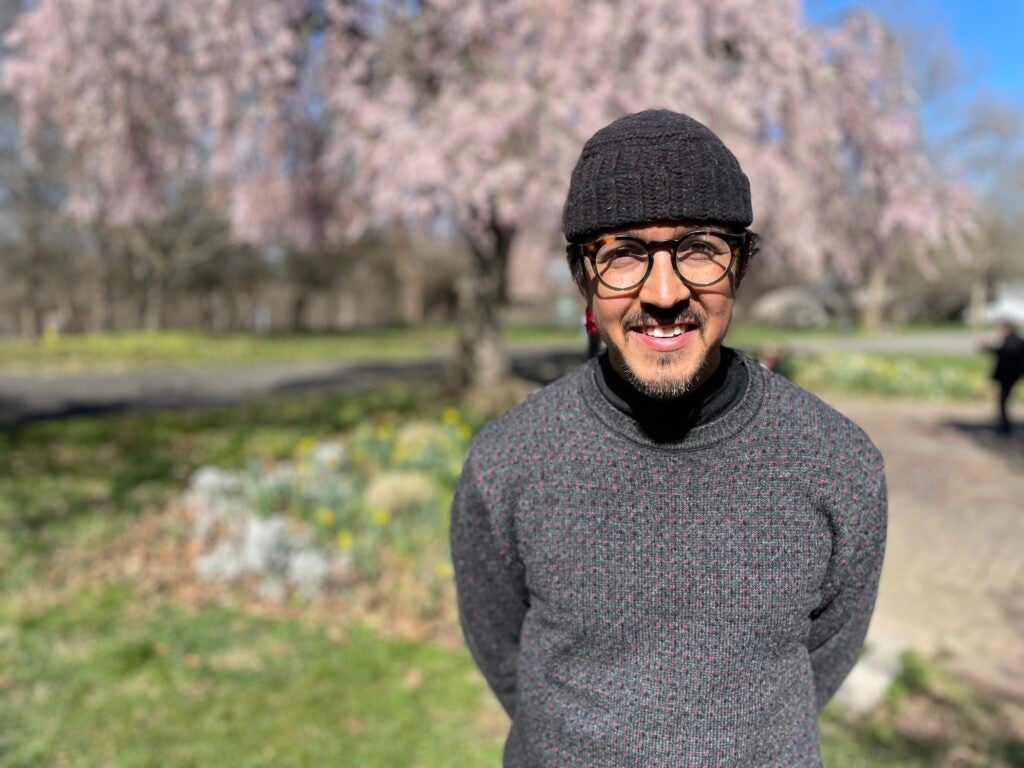
JL: I would say that the sound of the cherry tree blooming is the sound of people utilizing the park.
SP: I think you’re absolutely right in terms of there’s so many different ways to interact with nature and you really need to capitalize on every single one of those moments. So there’s maybe some people that only care about trees during cherry blossom season. Families are getting out and they’re having a positive experience with nature. If amazing beautiful trees are what it takes for that to happen for certain people, then we want to provide that for them. Perhaps that will allow them to think, “Oh maybe we should go on a hike in a couple weeks,” and maybe the flowers will be gone then and they can have a different experience but it’s all about getting people outside and to remember that we live on a on a beautiful natural planet made up of green spaces, and we should be out here to enjoy it.
The Cherry Blossom Festival of Greater Philadelphia runs through April 27.

Get daily updates from WHYY News!
WHYY is your source for fact-based, in-depth journalism and information. As a nonprofit organization, we rely on financial support from readers like you. Please give today.



